How Are Botox and Dysport Different?
Dysport and Botox are widely used neurotoxins (botulinum toxin injectables) that help reduce the appearance of wrinkles and fine lines. When deciding which injectable is right for you, there are a few factors that need to be taken into consideration. These are some of the main similarities and differences between Dysport and Botox treatment.
Botox vs. Dysport
Botox and Dysport have many similarities but there are a few key differences. Here’s what you need to know before your treatment:
Skin Concerns Addressed
Slight differences exist in the areas where Botox and Dysport are commonly used. Dysport mainly targets forehead wrinkles and glabellar lines (frown lines), while Botox targets forehead wrinkles, glabellar lines, crow’s feet, bunny lines, chin wrinkles, and neck bands. Botox can also be used for the medical treatment of migraines, TMJ disorder, and hyperhidrosis (excessive sweating).
Formula Composition
They are both made from botulinum toxin, a neurotoxin that temporarily paralyzes targeted muscles to reduce wrinkles and fine lines, but they differ in composition and dosage. Dysport contains smaller molecules than Botox, which may diffuse more quickly and spread to a broader area once injected. This can be an advantage when treating more extensive areas like the forehead. However, using a more considerable amount of Dysport might be necessary to achieve the same results as Botox.
Conversely, Botox has a higher concentration of larger molecules, making it better suited for precise treatments on smaller areas with more precision. The dosage for Botox may also be lower compared to Dysport since it can produce more dramatic results with smaller amounts.
Popularity and Safety
Botox and Dysport are both popular choices for treating facial lines and wrinkles and are FDA approved. Botox has been around longer (since the 1990s) and has gradually been approved for more advanced treatments, like the approval for crow’s feet in 2013. Still, Dysport has been gaining popularity in recent years due to its potential advantages in terms of diffusion and coverage. Dysport was approved for frown line treatment in April 2009 and, like Botox, has undergone extensive clinical testing to ensure its safety.
Recovery and Results
The downtime associated with Botox and Dysport is typically minimal, with most patients returning to their normal activities immediately after treatment. Some mild bruising or swelling may occur, but this usually resolves within a few days. Dysport tends to take effect more quickly than Botox, with results appearing within 2-3 days compared to 4-7 days for Botox.
Which Treatment is Best?
The decision to use Botox or Dysport depends on various factors, including the patient’s needs and preferences, the type and severity of wrinkles being targeted, and the desired outcome. Some physicians prefer Dysport because it may have a faster onset of action and diffuse more easily, making it helpful in treating larger areas such as the forehead. On the other hand, Botox is often preferred for more precise treatments, such as the lines around the mouth, because it is less likely to spread to adjacent muscles.
Schedule a Consultation
Board-certified plastic surgeon Dr. Giancarlo Zuliani is highly skilled in facial plastic surgery and non-surgical cosmetic rejuvenation. If you’re considering Dysport or Botox in Bloomfield Hills, MI, you can rely on safe treatment with beautiful results from Dr. Giancarlo Zuliani and our skilled nurse practitioner injector at Zuliani Facial Aesthetics. Schedule a consultation today and start your journey towards a more youthful, vibrant appearance.






